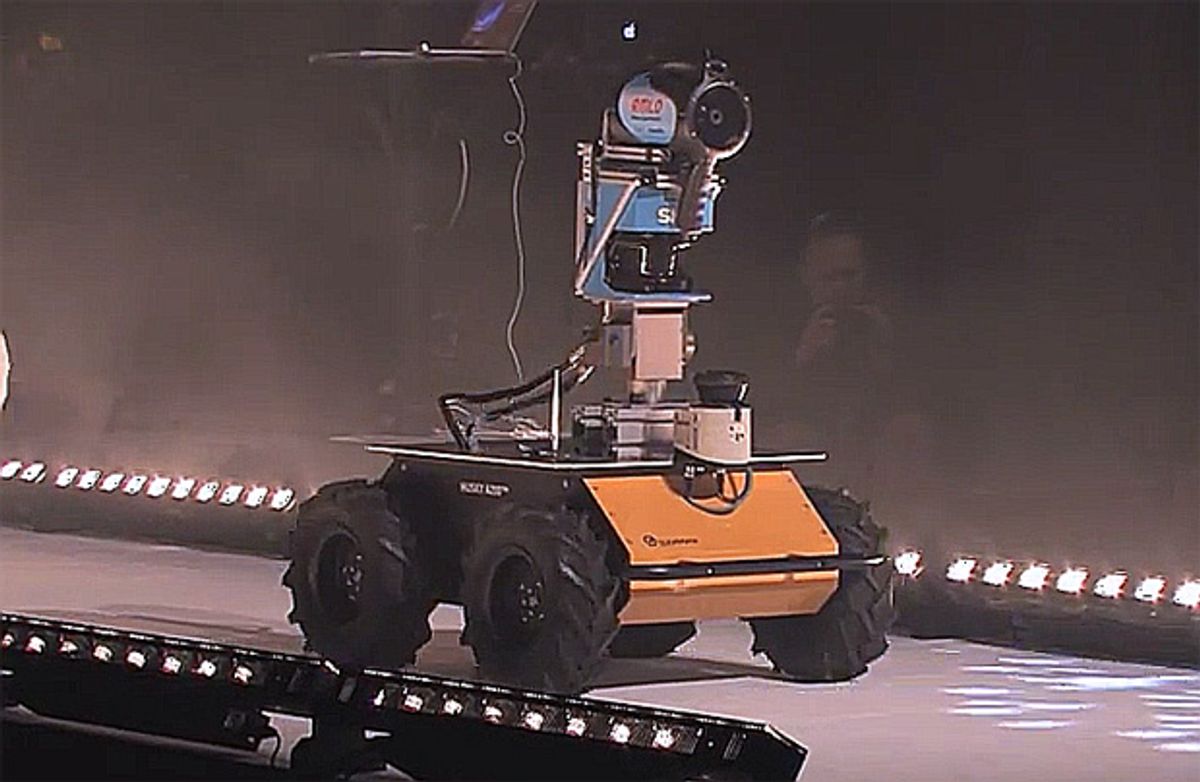Jobs don't get much more dirty than being the person who has to hike around landfills looking for sources of stinkyness. It's an important job, though, because stinkyness means methane, and methane means you're killing the planet. Yes, you. But seriously, figuring out where landfills are leaking is a critical and tedious and decidedly unpleasant thing, and you know what that means: bring on the robots!
Gasbot is a project from the AASS Research Centre at Orebro University in Sweden. It's a Clearpath Robotics Husky A200 mobile robot (awarded for free through Clearpath's Partner Program) equipped with a pair of laser scanners, a GPS, and a remote gas sensor. Specifically, we're talking about a Tunable Laser (LASER!) Absorption Spectrometer, which provides integral concentration measurements of gasses over the path of the laser beam. All you have to do is let Gasbot roam around a site where you think you might have gas leaks, and it will build up a map of concentrations and locations for you, while you see how many scented candles it takes to numb your olfactory centers.
The robot has already been tested in a decommissioned landfill, as well as in an underground tunnel where it was used to localize a leaking gas pipe. In both cases, Gasbot was successful, but there's still a bunch of work to be done before it'll be able to take over from humans. Specifically, it needs to get better at localizing, it has to be able to robustly traverse obstacles like you might find in a real landfill, and it also needs to be able to operate over a several square kilometer area by itself over the course of days or weeks. Doing all of this isn't likely to be easy, but it's almost certainly possible, and it'll give us humans some relief while it provides the data necessary to better manage waste gasses from landfills and biogas production sites.
[ Paper ] via [ Gasbot ]
Thanks Meghan!
Evan Ackerman is a senior editor at IEEE Spectrum. Since 2007, he has written over 6,000 articles on robotics and technology. He has a degree in Martian geology and is excellent at playing bagpipes.




